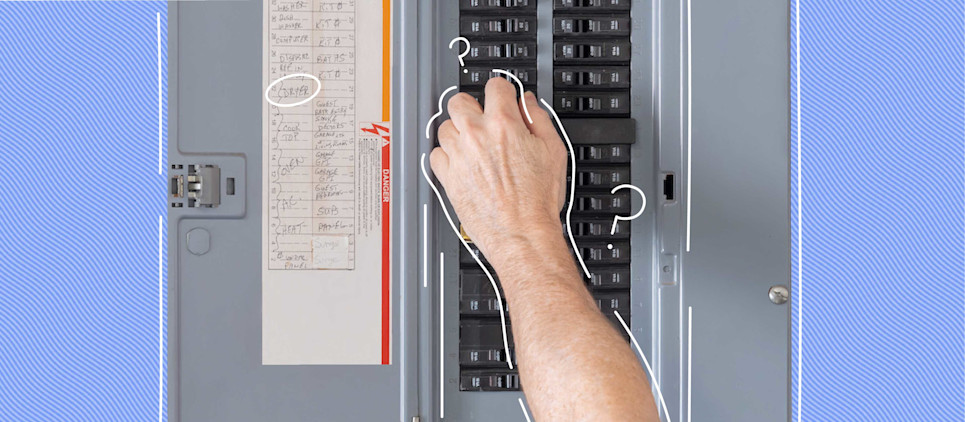Circuit breakers: What they are and how to reset them
When your lights go out, or appliances in the room suddenly stop working, it’s easy to panic or worry that you've lost power completely. Luckily, most often it’s just that a breaker has tripped, and it only takes a few steps to reset a circuit and restore power to your appliances.
Your circuit breaker panel, or breaker box, is usually located in the garage, basement, or hallways and will contain a series of circuit breaker switches labeled by room, or appliance. Sometimes circuit breaker panels can be hiding behind a piece of furniture or wall art. If you’re having a hard time finding yours, take a peek behind any easily moveable furniture.
Note: Always make sure to use dry hands, stand on a dry surface, stand to the side of the circuit breaker panel to prevent shock, and wear safety glasses if you have them.

Table of contents
What are circuit breakers?What causes circuit breakers to trip?How to reset a circuit breaker in 5 easy stepsWhat are circuit breakers?
Circuit breakers help regulate how much electricity is flowing to a certain power source, like outlets and appliances. That way if a circuit is overloaded, it will simply shut itself off to prevent any serious electrical or safety issues.
A circuit breaker switch looks like a heavy-duty, sideways light switch. When the circuit is working properly, the switch will be securely in the ON position. When the circuit breaker trips, the switch will be out of place toward the middle of the panel.
What causes circuit breakers to trip?
The most common reason that circuit breakers trip is overloaded outlets, or too many appliances running at once. When an outlet becomes overloaded, the circuit breaker flips to stop any surges in electricity.
Outlet extenders that add additional spaces for plugs can quickly overload an outlet even if everything plugged in uses a fairly low amount of electricity. Running multiple high amperage appliances like space heaters and hair dryers at the same time can also quickly overload a circuit.
Tip: If you do need to extend your outlet, always use a power strip with surge protection as another layer of safety.
Tip: Fuse boxes serve the same purpose as a circuit breaker but require you to replace the fuse when it is blown, rather than just flipping a switch. These tend to only be found in older homes—if you have this type of electrical panel, keep replacement fuses on hand for quick repairs.
How to reset a circuit breaker in 5 easy steps
Turn off lights and unplug in any appliances associated with the circuit breaker.
Locate your circuit breaker panel and open the metal door that covers the panel.
To reset the breaker, put some pressure into moving the switch first into OFF, wait a few seconds, and then flip it back into ON. You’ll feel it—and hear it—click back into place in the ON position.
Plug in your appliances one by one and test if they are working correctly. Do the same with each lightswitch. Testing each individually can help you determine if it is the appliance or the circuit causing the issue. If all of your appliances work correctly and the cricut does not flip again, you’re all set!
If you do notice that one singular appliance or light causes the breaker to flip again, it may have faulty wiring causing it to short circuit and you’ll need to call an electrician.
To avoid overloading the circuit again, evaluate the number of appliances plugged into a single outlet. If multiple high amperage appliances (like space heaters and air conditioners) or are plugged into a single outlet, move them to outlets that are regulated by different circuits.
Bungalow offers private rooms in shared homes that are more affordable than solo housing options in the same neighborhoods. Wifi, utilities, and monthly cleaning are set up before you move in so that coliving is seamless. Bungalow also has a dedicated maintenance team that’s there for you when you’ve tried troubleshooting household problems yourself, but need to call a professional. Find a Bungalow near you.
Ready to find your next home?
Move-in ready homes and a built-in community so you can feel at home, together — wherever you are.
Suggested articles



